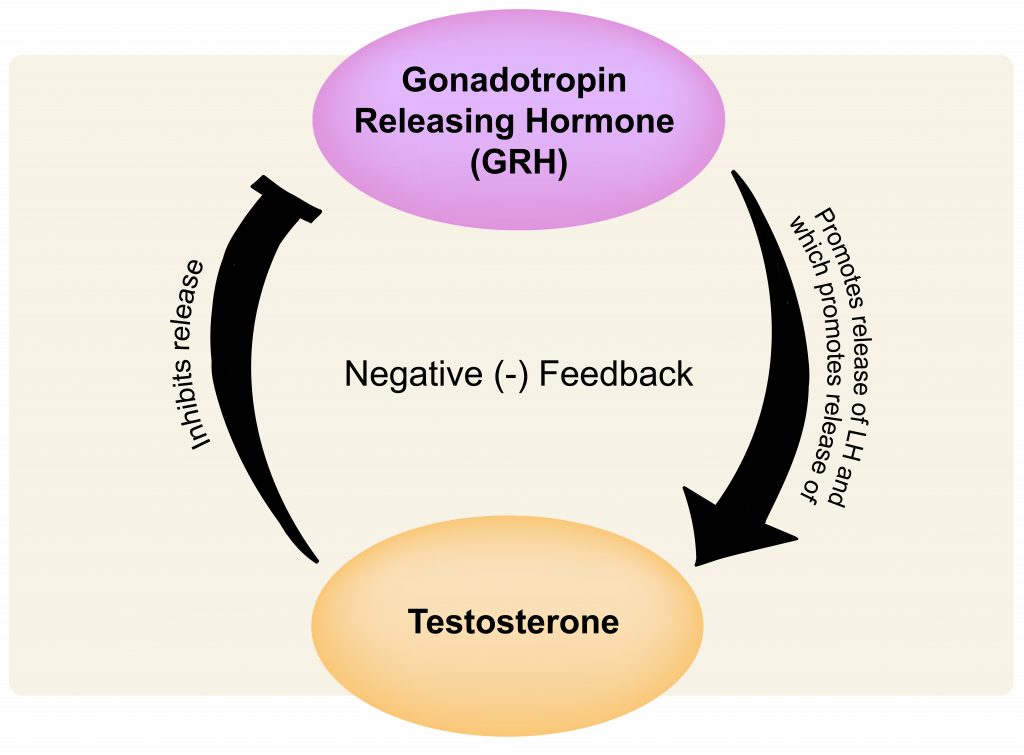13.5 Male reproductive physiology
The organs and structures described on the previous page need to work together under hormonal signaling to release semen with mature and motile sperm out of the penis. As described earlier, in both males and females hormonal signaling begins in the brain.
When LH is released by the pituitary gland, it travels through the body in the bloodstream, and targets the testes. LH stimulates the testes to produce testosterone and several other hormones. Testosterone then circulates through the bloodstream and has effects all over the body and the brain (See table 1 for some effects of testosterone).

The production of testosterone by the testes is regulated by a negative feedback loop (Figure 4). In short, negative feedback is when the effect of an action decreases the subsequent action. In this case the testosterone signals the hypothalamus to decrease the amount of GRH produced, therefore reducing the secretion of LH and FSH, and, in turn, decreasing testosterone production. If testosterone levels are low, the hypothalamus releases more GRH which signals the pituitary to secrete LH and FSH, again stimulating testosterone production from the testes. In this way the level of testosterone in the male’s body is kept within a relatively narrow range.


